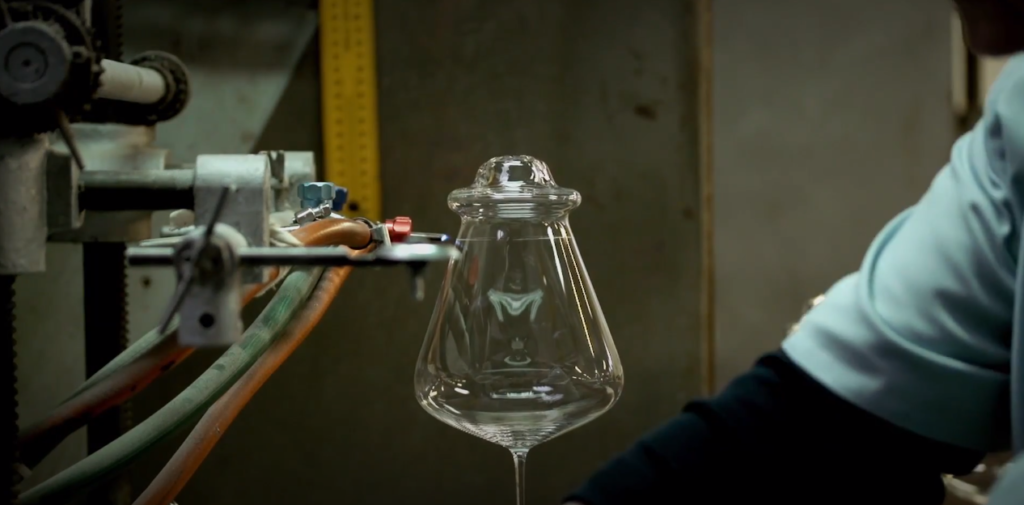The consumption of wine, a time-honored libation, is accompanied by a distinct array of customs and practices that serve to enhance the overall imbibing encounter. The wine glass constitutes a vital component within this ritual. Wine connoisseurs, sometimes known as “Wine Berserkers,” acknowledge the significance of selecting the appropriate glassware while indulging in their preferred wine varieties. This article provides an in-depth examination of wine glasses, encompassing their historical background, manufacturing process, and significance.
The Evolution of Wine Glasses
Wine glasses have a long and storied history, evolving over centuries to enhance the appreciation of wine. Here are some key milestones in the evolution of wine glass design:
- Ancient Beginnings: Wine has been enjoyed for thousands of years, and the earliest wine vessels were made from materials like clay and animal horns. These early containers were far from the elegant wine glasses we know today;
- The Roman Influence: The Romans made significant contributions to the development of glassmaking techniques. They introduced glassblowing, which allowed for the creation of more intricate and refined glassware, including wine cups;
- The Middle Ages: During the Middle Ages, wine glasses began to take on a more recognizable shape with a stem and a bowl. This design allowed drinkers to hold the glass without warming the wine with their hands;
- The Renaissance: The Renaissance period saw a surge in glassmaking innovation. Glassmakers in Venice, Italy, perfected the art of creating delicate, thin-walled glasses that showcased the wine’s color and clarity;
- 18th Century Elegance: The 18th century marked the height of wine glass design, with glasses becoming more ornate and specialized for specific wine types;
- Modern Era: Today, wine glasses come in a wide variety of shapes and sizes, each tailored to enhance the characteristics of different wines.
Anatomy of a Wine Glass

To understand the importance of wine glass design, it’s essential to know the various parts of a typical wine glass:
- Bowl: The bowl is the rounded part of the glass where the wine is poured. Its shape can greatly impact the wine’s aroma and taste;
- Rim: The rim is the upper edge of the bowl. It determines how the wine flows into your mouth and affects the overall tasting experience;
- Stem: The stem is the long, slender part of the glass that connects the bowl to the base. It allows you to hold the glass without warming the wine with your hand;
- Base: The base is the flat, bottom part of the glass that provides stability.
The Science of Wine Glass Shapes
Wine glasses are not one-size-fits-all; their shapes are designed to accentuate specific wine varieties. Here’s how different glass shapes affect the wine-drinking experience:
| Wine Type | Ideal Glass Shape | Characteristics Enhanced |
|---|---|---|
| Red Wine | Large Bowl with a wide opening | Aromas, aeration, and flavors. |
| White Wine | Smaller Bowl with a narrow rim | Crispness and acidity. |
| Sparkling Wine | Flute or Tulip Shape | Preservation of bubbles and aroma. |
| Dessert Wine | Small, Narrow Glass | Concentration of sweet aromas. |
The shape of the glass directs the wine to specific parts of the palate, enhancing the overall tasting experience.
The Art of Wine Glass Production

Crafting the perfect wine glass is a blend of artistry and science. Here’s an overview of the wine glass production process:
- Raw Materials: Wine glasses are typically made from crystal or glass. Crystal glasses, often containing lead oxide, are prized for their clarity and brilliance. The choice of materials affects the glass’s weight, transparency, and ability to conduct heat;
- Melting and Blowing: The raw materials are heated to high temperatures, creating molten glass;
- Skilled artisans use various techniques like blowing and molding to shape the glass into the desired form;
- Annealing: To ensure the glass is strong and free from internal stresses, it is slowly cooled in a controlled annealing oven;
- Cutting and Polishing: Crystal glasses, in particular, undergo intricate cutting and polishing processes to enhance their sparkle and clarity;
- Quality Control: Each glass undergoes rigorous quality checks to ensure it meets the manufacturer’s standards for clarity, symmetry, and strength.
Conclusion
Wine glasses are not mere vessels; they are essential tools for appreciating the nuances of wine. The evolution of wine glass design, the science behind their shapes, and the artistry involved in their production all contribute to the rich tapestry of the wine-drinking experience. Whether you’re a wine connoisseur or a casual enthusiast, choosing the right wine glass can elevate your enjoyment of this timeless beverage. So, next time you raise your glass for a toast, take a moment to appreciate the centuries of craftsmanship and innovation that have gone into creating the perfect vessel for your wine
FAQ
While you can technically use any glass for wine, using the right wine glass enhances the tasting experience. Different glass shapes are designed to accentuate specific wine characteristics.
Crystal glasses often contain lead oxide, making them heavier, clearer, and more brilliant than glass. They are prized for their elegance but may be more delicate.
Yes, wine glasses can significantly impact the taste of wine. The shape and size of the glass influence how the wine’s aromas and flavors are perceived.
Handwashing with mild detergent and gentle handling is recommended for wine glasses. Store them upright to avoid chipping and use soft, lint-free cloths to dry.
